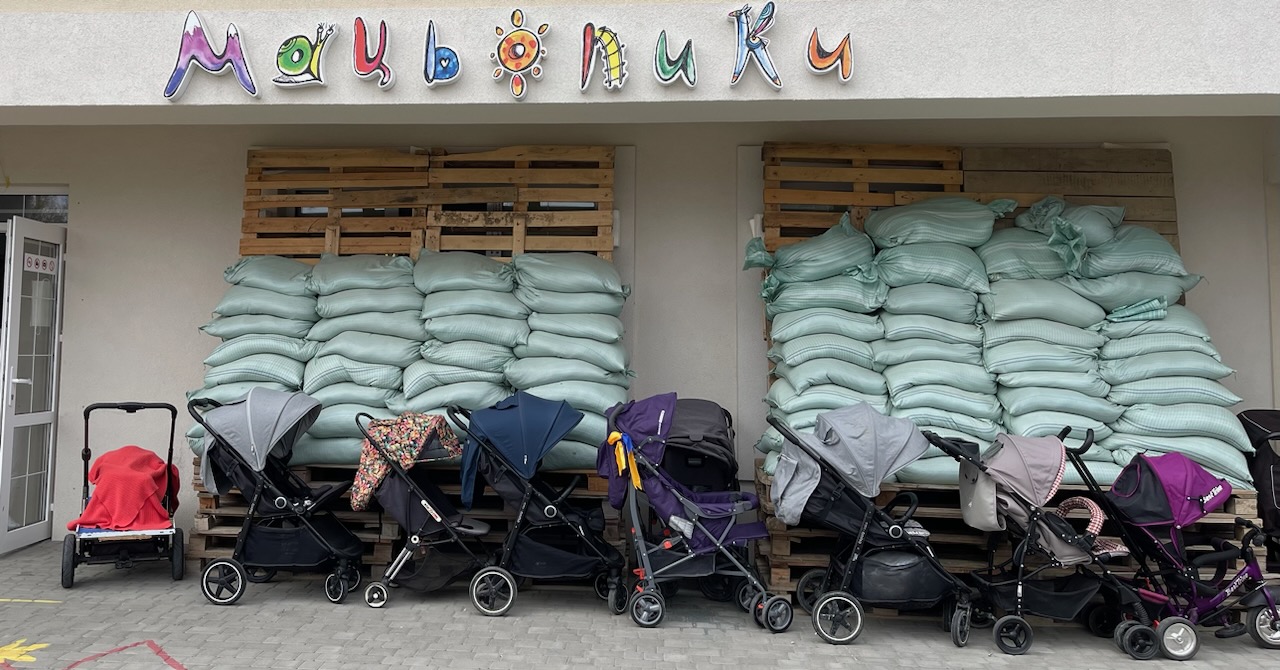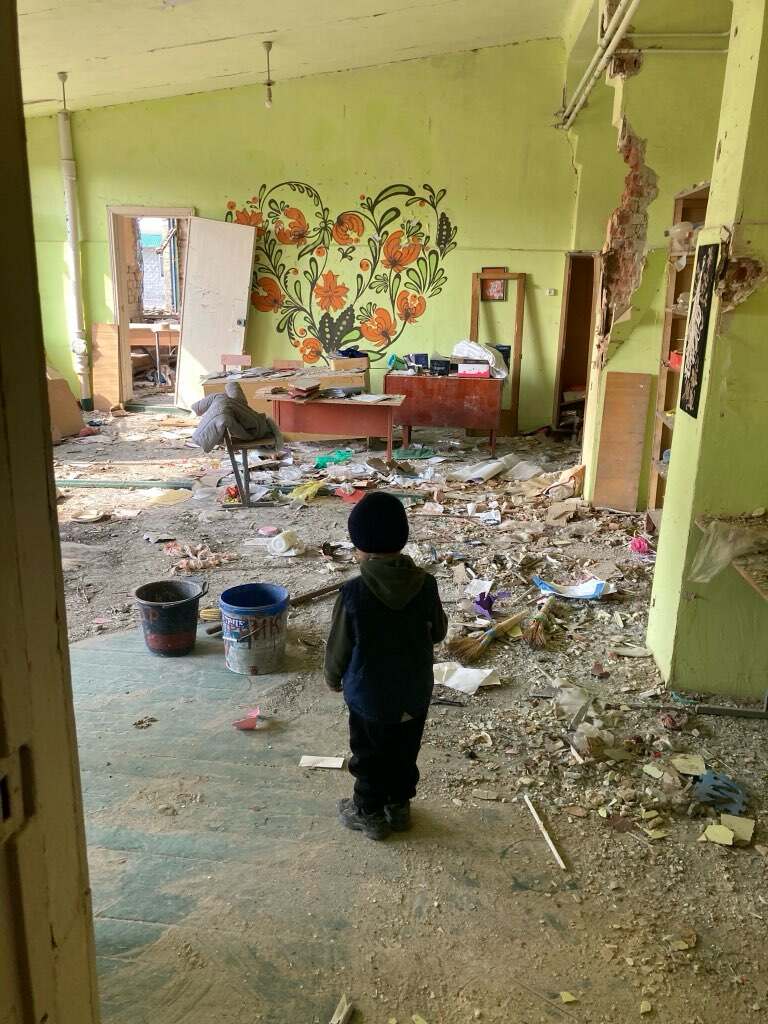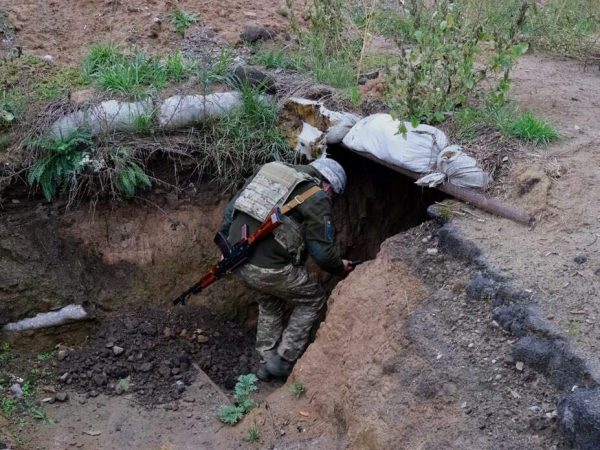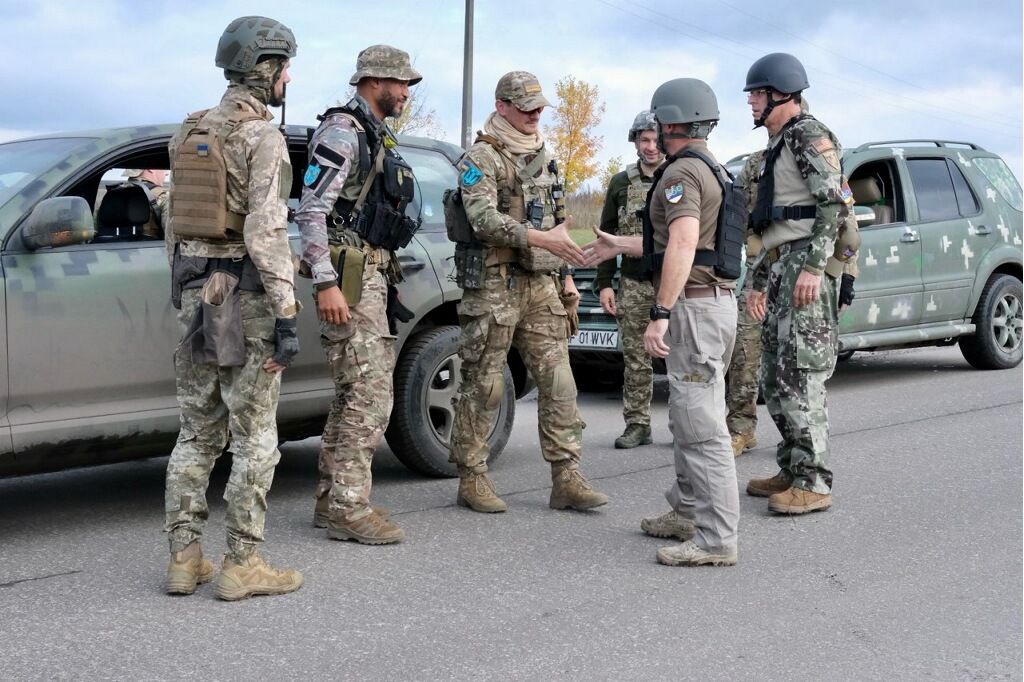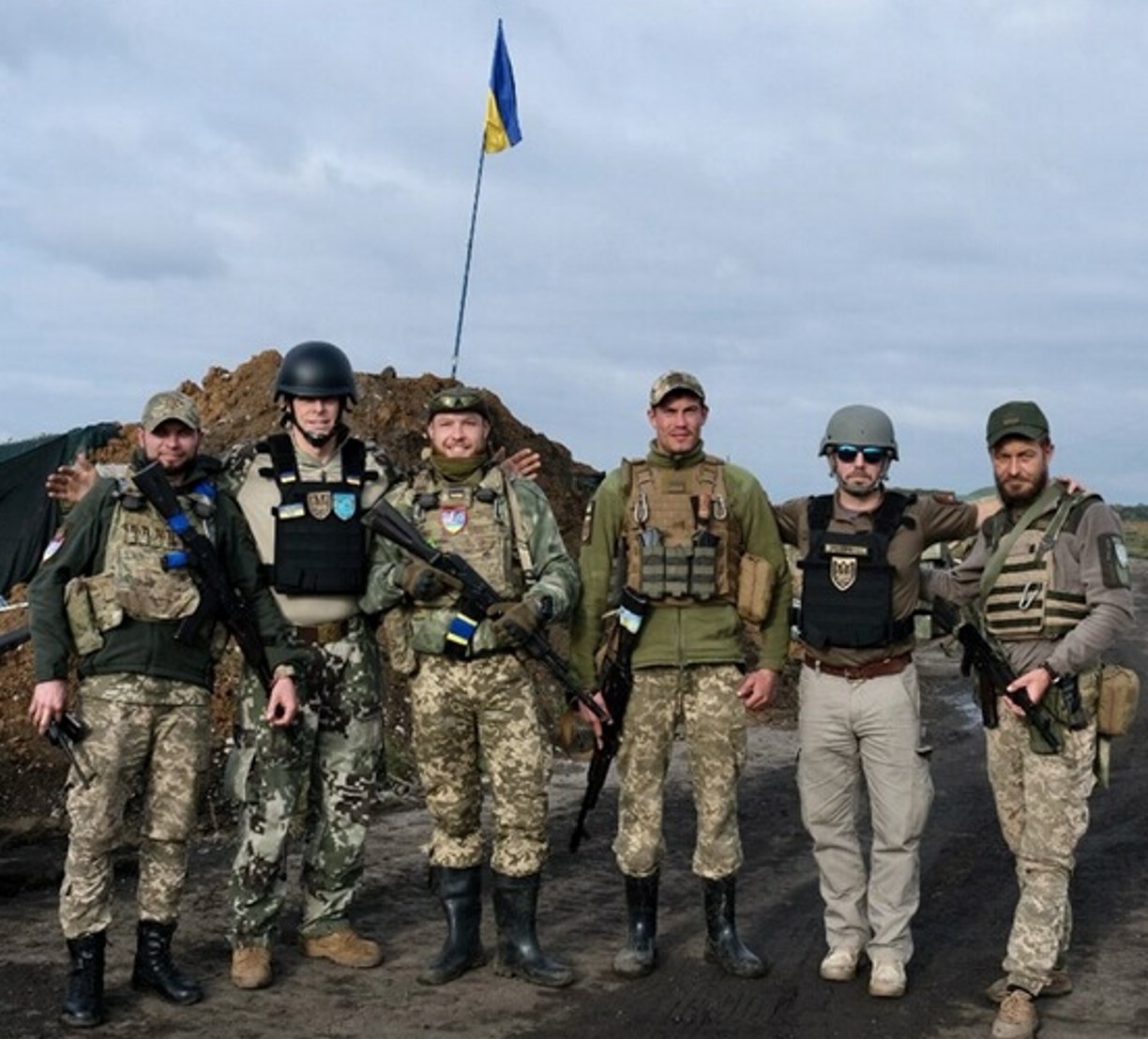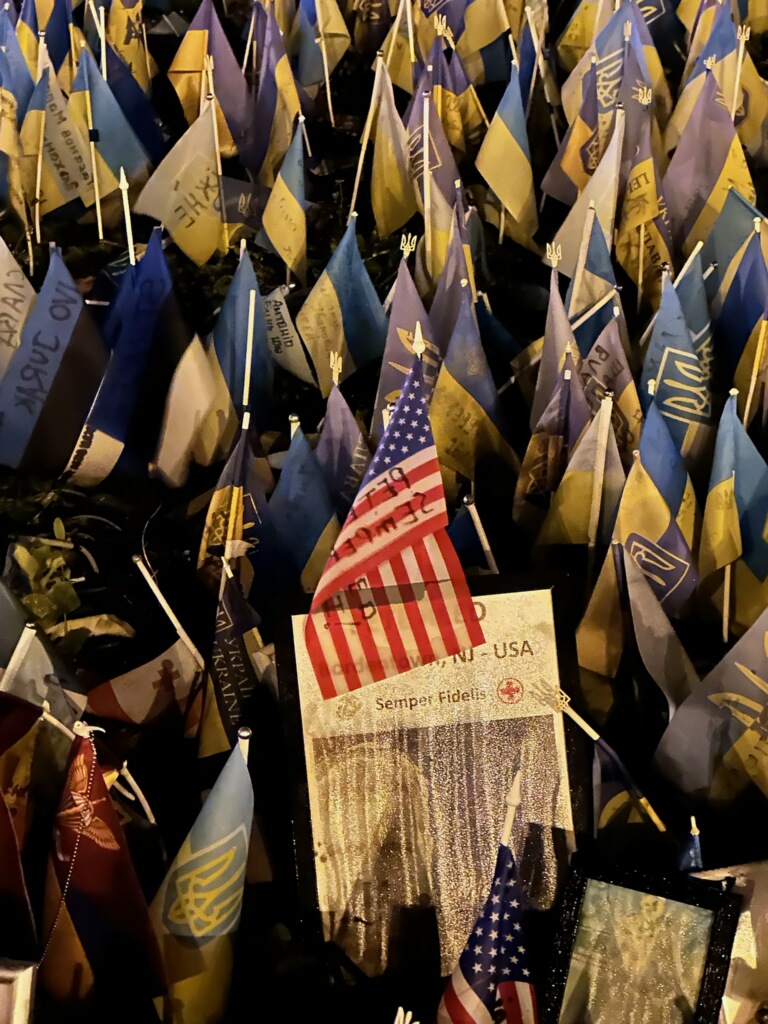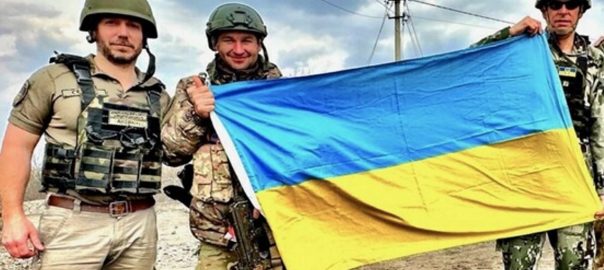
THE FATE OF DEMOCRACY IN THE HANDS OF CONGRESS: Russia’s Invasion of Ukraine Hits The Two-Year Mark at a Pivotal Moment in History
Ukraine is running out of ammunition. On the eve of the February 24 two-year anniversary of Russia’s savage, unprovoked full-scale invasion, Ukraine now faces the very real possibility of losing the war to Russia because the West moved aid neither fast enough nor boldly enough to counter the global threat posed by the brutal dictator, Russian President Vladimir Putin. This harsh reality slowly emerged over the past year, as the global unity that boosted underdog Ukraine gave in to partisan politics. And it took on new urgency over the last week, first with the loss of the strategic city of Avdiivka due to ammunition shortages, and then most starkly with the U.S. House of Representative’s failure to advance a critical $60.1 billion aid package— in spite of strong bipartisan and public support— before leaving on a two week recess.
These next few weeks may well be one of the most consequential moments in history. The fate of Ukraine has brought two very distinct futures for our planet into focus: a future dominated by those who treasure transactional relations, isolationism, and strongman authoritarianism upon which a terrifying future would be certain; or a future defined by those who value human life, freedom, self-governance and the multilateral world order upon which progress is being built. Ukraine is fighting for all of us at the front line of this positive vision of the future, and we can not allow Russia to prevail. Abandonment of our ally in their greatest time of need would deliver a self-inflicted, strategic defeat for America and our allies from which we would struggle to recover. “If we fail to help Ukraine,” implored U.S. Senator Mitt Romney, “America will cease to be the arsenal of Democracy.”
Congress has a rare opportunity to make a world history-altering decision. This is not just a debate about an aid package, it is a debate about what might be the most important commitment of assistance to Europe since the Second World War. Congress must swiftly affirm America’s global leadership role and provide Ukraine with the resources it needs to prevail.
The People
I write this with clear eyes but admittedly some personal emotion, having volunteered with the charity UkraineFocus on three humanitarian missions to Ukraine since the full-scale invasion. There, I befriended some of its brave and dynamic people, traveled thousands of miles within the impossibly beautiful country, and experienced first-hand the soaring potential of everyday people to persevere through the most unimaginable horrors.
So many inspiring scenes are seared into my mind. The soldiers proudly standing guard over a freshly conquered bunker on the very border of Russia, cheering their thanks for America’s help. The defiant principal piecing together the elementary school that had been shelled, looted and occupied. The orphanage doctor, leading us with hushed voice into the nursery as a dozen newborns slept, unaware of their precarious condition. The shoppers browsing the produce aisle as the air-raid siren blares. The technician sculpting a new leg for an amputee. The indomitable teenagers in a rusted-out factory welding scrap metal into stoves to keep far-away soldiers from freezing in trenches. The smiling colonel serving hot soup in the nondescript farmhouse near the front, unbothered by the nearby thump of artillery— outgoing or incoming?— and the presence of hostile drones. All the brave people who proudly toil in coffee shops, gas stations, hotels, hospitals, advocacy organizations and halls of government and academia, convinced that with just enough help, Ukrainians can defeat the invading Goliath, rebuild under their own banner of freedom and prevent the spread of Russia’s terror to the wider world.
The stakes simply couldn’t be higher on this two-year anniversary, as the rope begins to slip though our hands. Americans must be clear-eyed about what a collapsed Ukraine would mean for all of us.
The Stakes
Since the onset of the full-scale invasion, and the prior eight years of escalating conflict and occupation, Russia demonstrated an awful disregard for life. Direct targeting of civilians has claimed the lives of 10,000, according to government counts. But those numbers are uncertain. The siege of Mariupol alone is said to have killed between 8,000 and 75,000 civilians. Ukrainian officials also estimate that Russia has abducted between 19,000 and 300,000 children, crimes against humanity for which the International Criminal Court issued an arrest warrant for President Putin.
Nearly six million refugees fled Ukraine during the first wave of the invasion, with another eight million internally displaced. A Ukraine in collapse would trigger an even larger refugee wave into Europe and beyond.
There is no reliable estimate of the high number of Ukrainian military casualties, but nearly all agree that the losses on the Russian side are higher. This month, Russian casualties surpassed 400,000. It is common to see Russian daily loses exceed 1,000, as poorly trained and equipped men are thrown forward into the meat grinder.
These staggering numbers portend a frightening fate for Ukrainians were the nation’s armed forces to fall.
A collapsed Ukraine would also severely impact the global economy. According to the United Nations, the war has already exerted downward pressure on global economic activity, exacerbating inflation and stalling the post-COVID recovery. Economic impacts of the war have been felt worldwide, notably in food and energy. Ukraine was once the world’s breadbasket— a leader in agricultural exports to the Middle East, Africa and beyond. The war impacted that, increasing prices for commodities as far away as here at home and driving up food insecurity, especially in developing nations in Africa. So too with energy prices, as Russian sanctions drove up oil and gas prices and increased volatility, particularly in Europe which experienced dramatic shocks.
Abandonment of Ukraine would send a horrendous signal that America is no longer willing to lead a defense of the shared values for which so many that came before us fought to secure. Following World War II, America and its allies spent decades securing international clout and building global institutions such as the United Nations and NATO. As our increasingly interconnected world confronts increasingly global challenges, we can not afford a weakened America or a splintering of nations. That’s the outcome of American isolation at this critical moment. Imagine a likely future where world leaders gather to negotiate responses to global issues like climate change, the next pandemic, or another outbreak of war, but America finds itself mistrusted, weakened and unable to advance our interests.
Experts are debating where Putin would go next if the Ukraine bulwark falls. “This is a leader that wants empire,” remarked former US Ambassador to Ukraine William B. Taylor on the podcast Ukraine: The Latest. Would Putin move on a NATO nation, or a NATO-adjacent nation because of his own territorial ambition? It seems inconceivable, but it also seemed inconceivable that he would have invaded sovereign, democratic Ukraine.
Leaders in NATO ally Poland, which consists of former Soviet land, warn that Putin “will eventually knock on our doors.” The Danish Defense Minister determined that Russia could attack a NATO nation in three to five years. At the very least, a defeated Ukraine would make it that much more likely that Putin will look to advance territorial aims elsewhere, especially against nations like Moldova that lack NATO protection. It is no secret why Finland raced to secure NATO membership last year and Sweden itself is on the doorstep of joining. Europeans understand the risks of an emboldened, bloodthirsty Putin. America must understand the potential for a wider conflict, and the implications for our own men and women in uniform.
Make no mistake, our actions now have implications for other authoritarian regimes who may be eying their neighbors, such as China’s ambitions for Taiwan. Taiwan’s de facto ambassador to the U.S., Bi-khim Hsiao, summarized the stakes clearly: “Pushing back on aggression is the key message that will help to deter any consideration or miscalculation that an invasion can be conducted unpunished, without costs, in a rapid way. We must ensure that anyone contemplating the possibility of an invasion understands that, and that is why Ukraine’s success in defending against aggression is so important also for Taiwan.”
The Urgency
Timing is everything. Dithering leads to disaster. The West’s collective failure to provide aid to Ukraine quickly enough has had cascading, geopolitical impacts.
During the first year of the war, boosted by an outpouring of aid led by President Biden and a bipartisan Congress, Ukraine’s ingenious and brave military shocked the world with its heroic defense of Kyiv, the lightning counteroffensive in Kharkiv, and the recapture of Kherson. Ukraine exposed Russia as a shell of a superpower with merely the “second strongest military in Ukraine,” as Secretary of State Antony Blinken put it. And it has managed to destroy a third of Russia’s Black Sea fleet— 25 warships— without having a navy of its own.
But then politics crept in. Global aid began to slow, and vital weapons systems like Abrams tanks, “ATACMS” missile systems, and F-16 fighter jets always seemed to arrive too little too late. Delays allowed a wounded Russia to reposition and rearm by inking arms deals with North Korea and Iran, whose shells, missiles and drones now rain down daily on civilians. An emboldened Iran, in turn, appears to be playing a lead role in the expansion of violence in the Middle East with Hamas’ terror attack on Israel, Houthi rebels in Yemen who are attacking shipping on the Red Sea, and the Islamic Resistance in Iraq whose drone strike claimed the lives of three American soldiers stationed in Jordan. All of it is interrelated, and the breadcrumbs lead back to the lack of urgency to complete the job in Ukraine. Authoritarian bedfellows thrive in the vacuum of indecision and inaction, and we pay an ever-expanding price.
Let’s be clear. Putin is not our friend. Under his hand, Russia has meddled in at least eleven elections in nine nations, including our own. Putin jails journalists on trumped-up charges like the Wall Street Journal’s Evan Gershkovich and murders opposition politicians like Alexei Navalny and Boris Nemtsov. Putin seeks to divide us through targeted social media campaigns, like the disinformation campaign to sow doubt about the COVID-19 vaccine. And he advances Russia’s economic interests through brutal force, using the likes of the Wagner Group to murder and intimidate civilians in Central African Republic mining regions. If Putin’s objective is not “empire,” then it is to secure the slow and steady erosion of Western institutions.
Investments Now, Or Extraordinary Costs Later
The chief attack against further US aid to Ukraine is that we cannot afford it. That is not reality. To date, America’s commitment of 5 percent of our defense budget to Ukraine, or 1 percent of our total federal budget, has degraded 50 percent of Russia’s military capabilities, all without any American boots on ground. This may be one of the most efficient applications of defense dollars in history. And what’s more, 90 percent of that spending has remained in the United States, with investments in defense production in 38 states, and subcomponents sourced from all 50 states. Skilled workers in factories all across America from Texas to Kentucky to New York are literally helping to prevent the world from descending into chaos. Just imagine the cost if this war were to spread beyond Ukraine. This is a no-brainer, and it’s not even close.
A collapsed Ukraine and a wider war would risk extraordinary costs for American lives and treasure when contemplating the triggering of our NATO Article 5 collective defense obligations. The United States has more than 100,000 troops stationed in Europe, with 10,000 in Poland alone. A Russian army on the move toward NATO and US troops along the Polish border conjures staggering scenarios.
Our elected leaders must ask themselves what future they want America to champion: one in which tyrants run rampant over underdogs, or one in which strong alliances enable us to exercise our sovereign rights, freedoms, and commitments to the grand experiment of democracy. The American public has already answered that question. This week, Pew research revealed that 74 percent of Americans view the war as important to U.S. national interests. This dashes the narrative that the public has moved on from this war.
The good news is that it is not too late. There is still time for Congress to act. On February 12, the Senate passed the $60.1 billion foreign aid package for Ukraine by a wide, bipartisan margin, 79-20. It is said that the House would pass the measure by a similar bipartisan margin, but only if leaders first allow it to come to the floor for a vote upon returning to Washington on February 28. For his part, President Biden assured President Zelenskyy that he is confident that it will succeed.
Ambulances to the Front
On my last mission to Ukraine in November, our UkraineFocus team delivered a convoy of ambulances and medical gear to a Territorial Defense Force unit in the southeast. The unit commander greeted us at a wind-whipped parking lot on the banks of the Dnipro River. Younger and stouter than me, his grey eyes revealed the anguish of a man who had lived a thousand years in cold, bloody trenches as an invading force shredded fellow Ukrainians and his bucolic homeland. We came to help him in the way that we could, armed with humanitarian donations that could save the lives of his troops. I couldn’t help but detect his fatigue during the moment. Fatigue from the war that never should have happened. Fatigue from the subsequent delays in critical aid that may have brought the killing of his fellow brothers and sisters to a speedier end. Fatigue about some far-away debate that the world’s helping hands had simply grown too tired to continue the lifeline.
We gathered in a small circle to mark the exchange and say a few warm words of fellowship. The soldiers thanked us. But it was we volunteers— Americans and Europeans—who were most grateful, as the men and women standing before us were prepared to pay the ultimate price for for our freedom. They just needed our help.
The exposed parking lot was not a place to linger. After posing for some quick photos, trading unit patches, and offering farewell embraces, the soldiers took control of the ambulance convoy and headed south to the front.
Basil Seggos writes this in his personal capacity. He volunteered on three missions to Ukraine with the charity UkraineFocus.org and is a visiting fellow at the National Security Institute. In his professional capacity, he is the Commissioner of the New York State Department of Environmental Conservation and a former officer in the U.S. Army Reserve.



